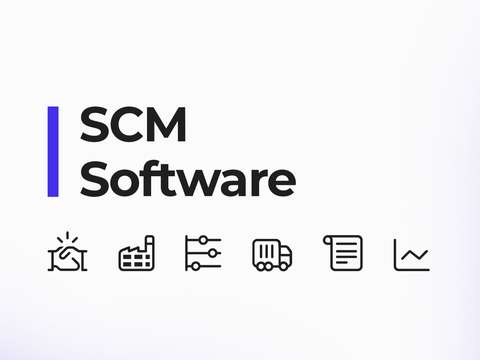In the realm of inventory management and accounting, two commonly used methods, LIFO and FIFO, hold significant importance.
While both are popular, especially in accounting, understanding when to choose each is crucial to optimize financial strategies and overall operational efficiency.
In this article, we explore the intricacies of the LIFO and FIFO methods and provide a clear vision of their advantages, disadvantages, applications, and consequences.
By analyzing these inventory management and accounting strategies, you'll be able to make an informed decision every time you want to calculate costs and profits regarding sales and inventory levels, successfully choosing the most convenient option out of the two.
What is LIFO (Last In, First Out)?
LIFO ("last-in, first-out") is a way of handling inventory based on the premise that the items that were last produced or stocked are sold before older inventory.
However, LIFO is also an accounting method. The last-in, first-out method can be used for both accounting and inventory management or one of the two.
Most typically, the LIFO method is used for accounting, as it can help reduce the payable taxes a company faces, without causing stock to expire or become obsolete.
Using LIFO for financial purposes is banned in many countries and is a common practice only in the U.S.
What is the Difference between LIFO and FIFO?
In inventory management, the LIFO method ensures that the last items to come into stock are cleared first.
While for some businesses, this may not be bad, the truth is that even when products don't expire, they can lose their value over time. This is the case for electronics, appliances, and fashion.
So important is the age of the products that some business models even rely on having new launches and limited products and collections as the core of their operations.
In these cases, using a "last in, first out" approach to manage their inventory is detrimental to the customer experience and their overall finances. They should opt for a FIFO approach instead.
In FIFO (first in, first out), inventory is cleared out as it comes in. This means that the company won't be storing items that are losing value and potentially getting discarded, thereby offsetting costs instead of benefits.
On the other hand, FIFO, as an accounting method, is more accurate than LIFO, but it doesn't have the benefit of potentially reducing the payable taxes the company has to endow.
If you are interested in sorting your inventory in the most efficient way, we encourage you to check out our article on ABC analysis, an inventory classification method based on sales levels.
LIFO in accounting
LIFO in accounting measures an older cost of production with a new price tag.
However, this doesn't mean that a company using LIFO for accounting also uses the LIFO method for stock control.

Companies can choose to use the FIFO method for the management of inventory while using the LIFO method for the accounting side, ensuring that the goods with earlier expiration dates are sold before the goods with later expiration dates.
LIFO, as an accounting method, keeps profits artificially lower, but how do you calculate it?
How to calculate LIFO
To calculate your LIFO, determine the cost of your newest inventory and multiply that cost by the amount of inventory sold.
LIFO method formula = Cost of new inventory × amount of inventory sold (quantities)
The LIFO formula can also be calculated for specific periods of time. This can be useful, especially if you acquired inventory at different times and prices and want a more accurate calculation for internal purposes.
LIFO example
Christina and Marcus run a honey company and want to calculate the LIFO and FIFO to obtain a lower tax report and save resources.
They produced a batch of 100 jars of honey in spring with an overall cost of $6/jar. In summer, they managed to get an extra 54 jars for a cost of $7.5.
Now that they are in September, they managed to sell 134 jars of honey, and they want to calculate the profits of the last months.
With a last in, first out approach, the LIFO calculation comes to a total of $855, with each batch calculated separately.
With the FIFO method, everything is accounted for with one price and cost, resulting in a total of $1005.
The difference between the costs of both inventory calculations is called the LIFO reserve. In this case, the reserve is $150. This is essentially the amount that the company "saved" now but will need to pay in the future.
LIFO in inventory management
As an inventory and sales management method, a LIFO methodology can lead to expired products that need to be discarded or items that are becoming obsolete and need to be cleared out by providing a discount or some other kind of offer.
LIFO should be avoided in companies handling large batches of perishable items or if they don't have an integration with a stock management system or an advanced WMS that tracks inventory or if they have a network of multi-location inventory.
Why use LIFO?
Companies working with physical inventory whose manufacturing has increased or is increasing can justify wanting to use the LIFO method as a way to save on taxes.
Compared to FIFO, LIFO reports lower profits, hence, fewer taxes to pay. Of course, this is only true in a situation of rising prices.
When the price of the products and the production cost remains constant, using FIFO or LIFO shouldn't make a difference. But, generally speaking, prices tend to change.
This is why FIFO, while being more accurate, is less beneficial for companies trying to reduce their taxes. This is ultimately the only reason why businesses use LIFO.
But there are more ways of making warehouse operations more efficient.
With Outvio, online stores can automate dozens of processes, from fulfillment to shipping, tracking, returns and exchanges, and much more!
Outvio even contributes to a better customer experience thanks to automated branded order notifications, a tracking page that enables customers to follow and edit their orders, as well as a fast self-service returns and exchange process. Try it now!
Conclusions
While LIFO can be advantageous for companies experiencing inflation or price increases, it's important to address that a last-in, first-out approach can harm the financial state if prices are decreasing.
"Last in first out" is also not advised if you need accurate information to build cash flow forecasts and other business reports.
Other than that, using a LIFO calculation to reduce taxes is perfectly legal in the United States and can be done whenever a company perceives that it will help them reduce taxes.
For a more accurate calculation, it's recommended to use FIFO (first in, first out) since LIFO artificially tweaks the profits, and this will alter many other business metrics and reports.
On the other hand, a last in, first out strategy applied to the management of the inventory can mean that some of your stock becomes obsolete or expires and needs to be discarded. In this sense, there's no doubt about the effectiveness and profitability of a FIFO model.




